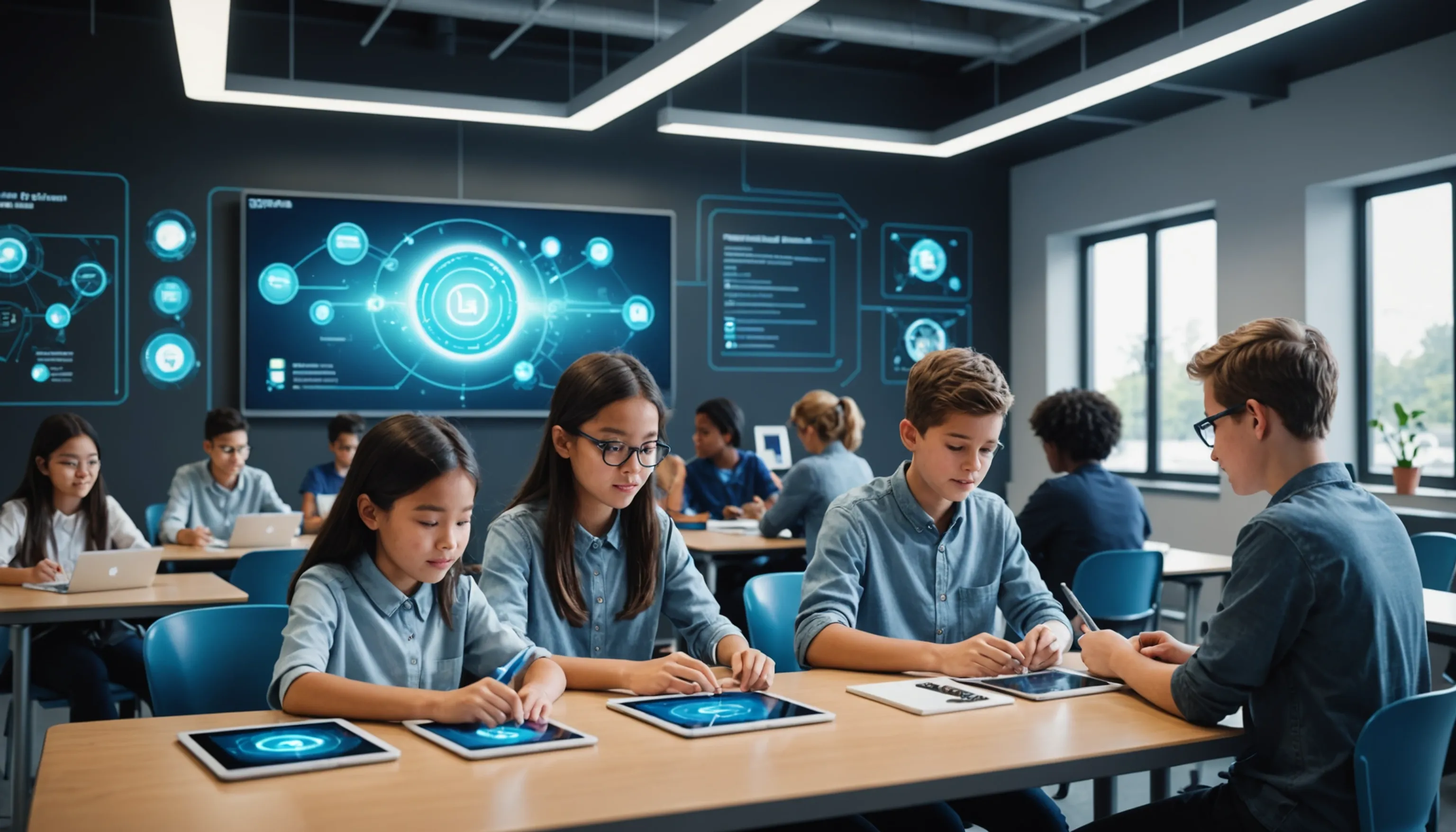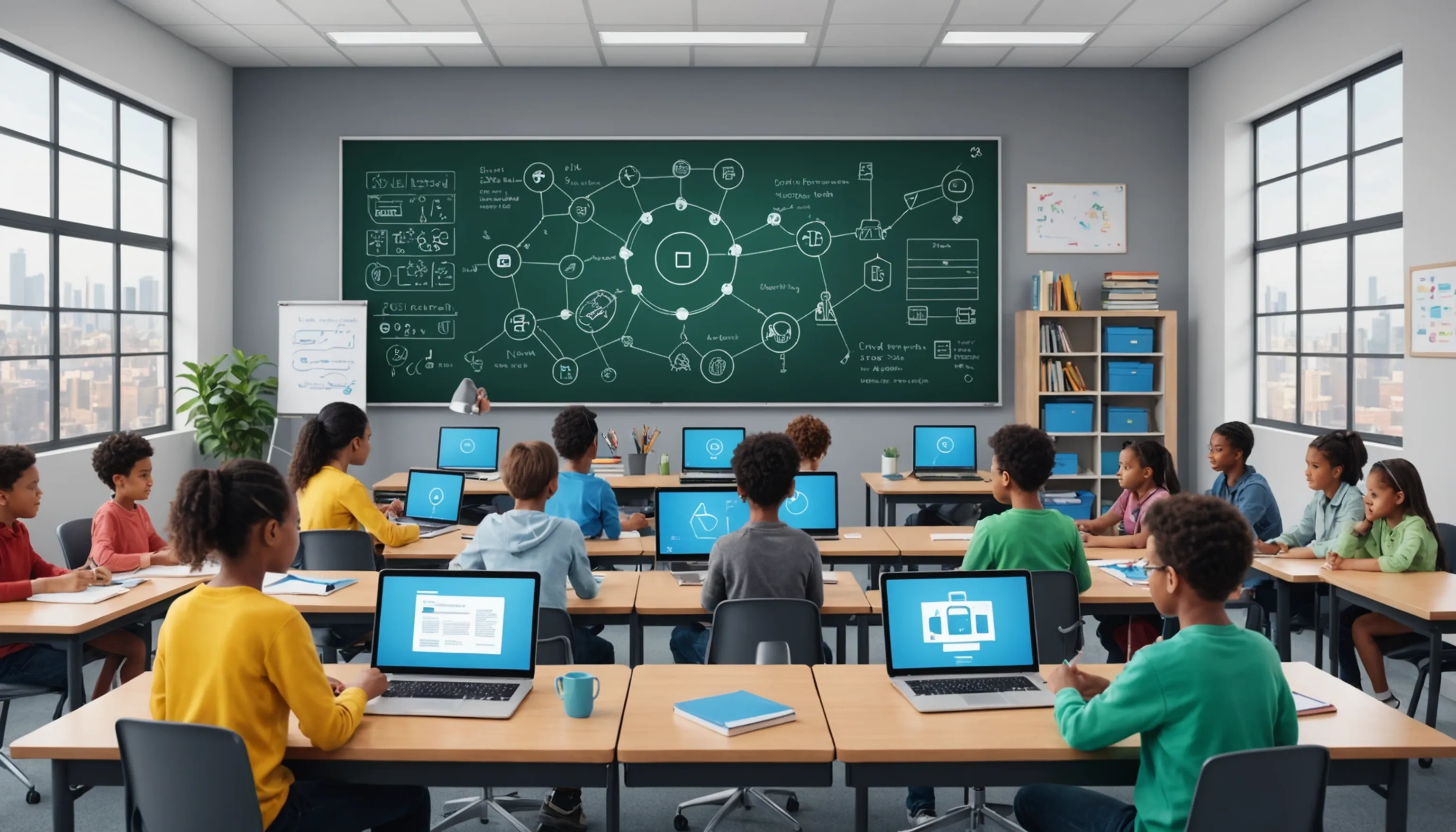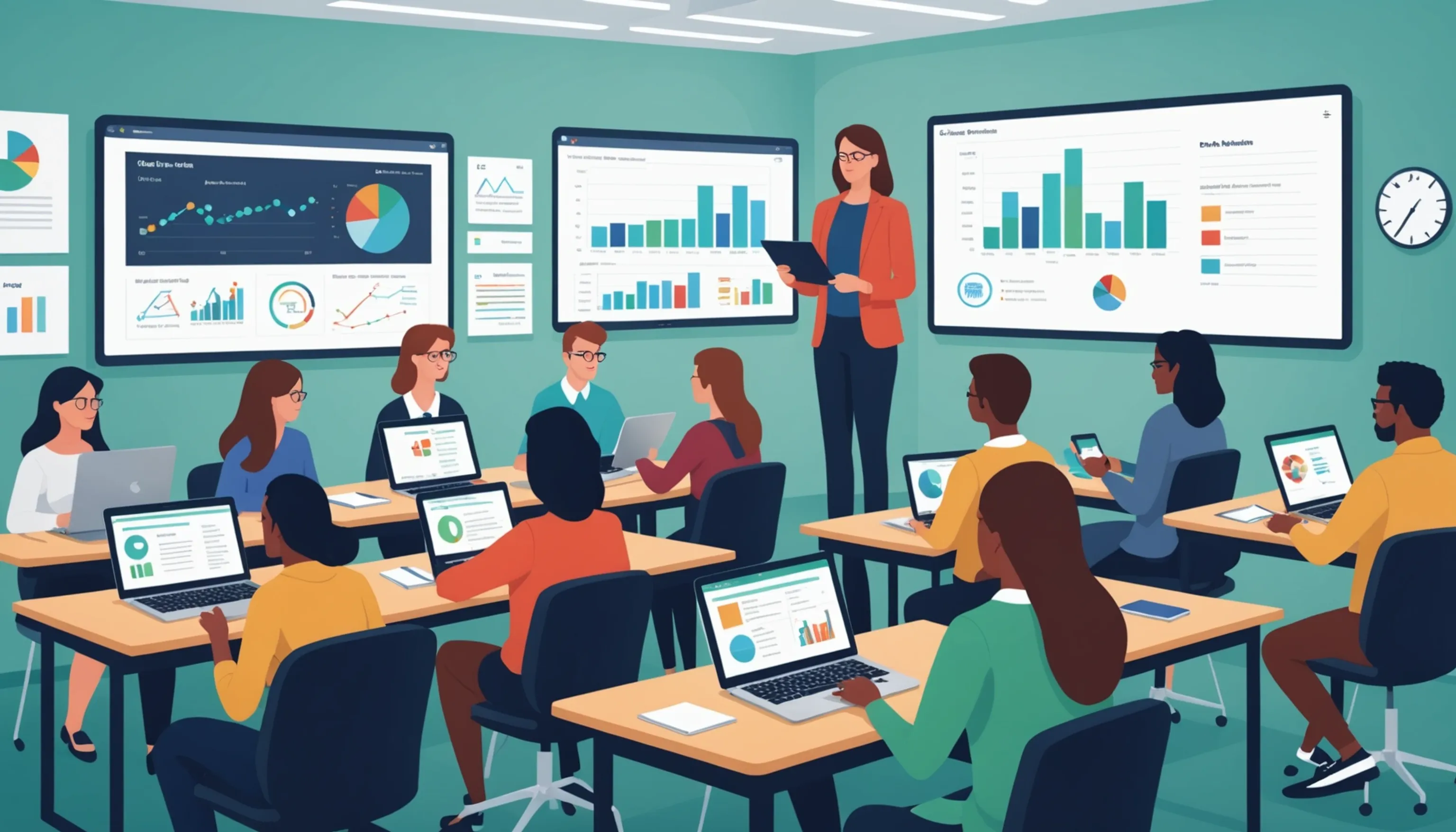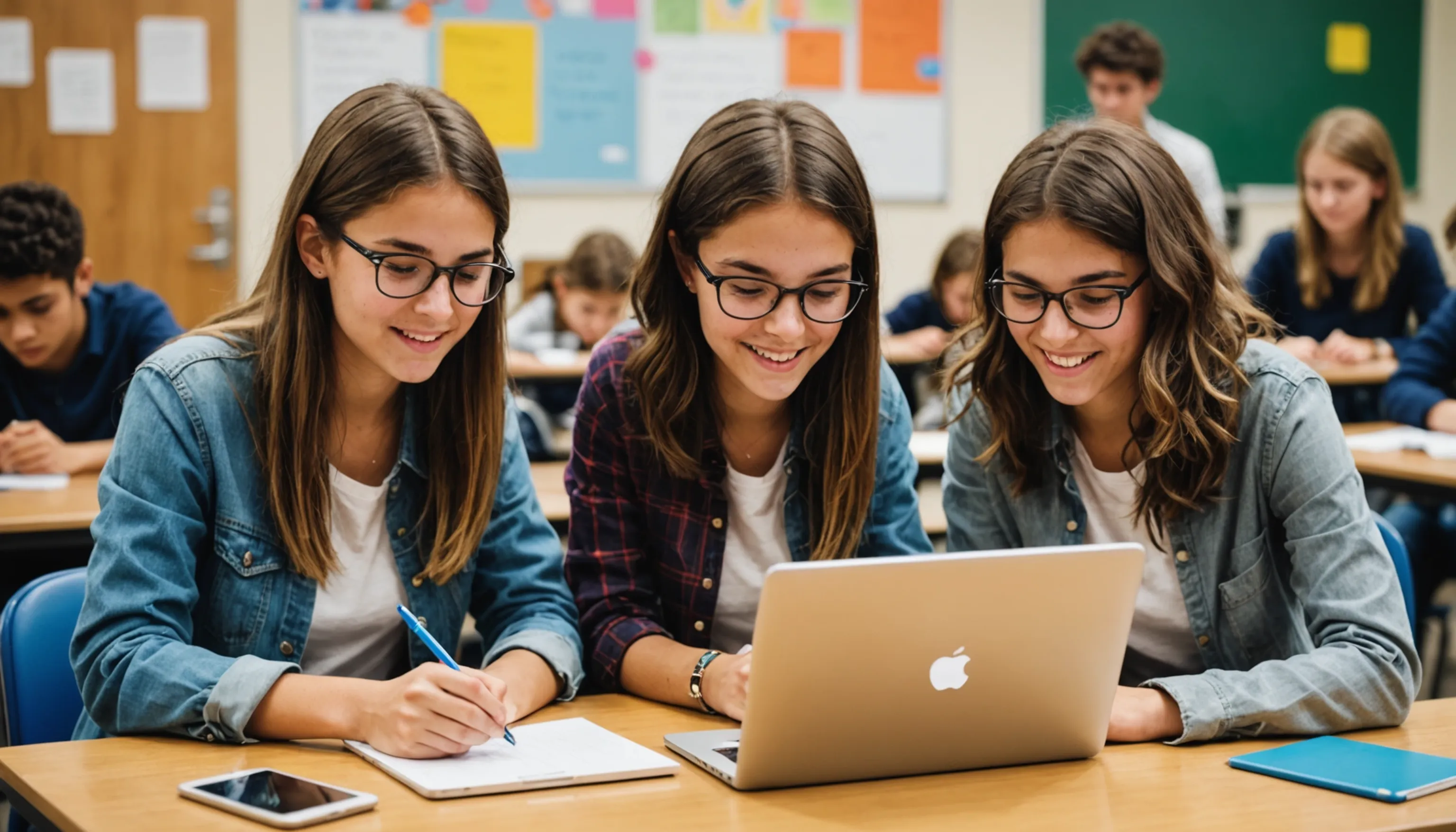Personalized Education in the Future of Learning
 HvWHenry van Wagenberg
HvWHenry van Wagenberg
The Future of Learning: Personalized Education
The future of learning is increasingly leaning towards personalized education, which tailors the learning experience to meet individual needs, preferences, and learning paces. This approach recognizes that each teenager has unique strengths and challenges, allowing for a more engaging and effective educational experience. With advancements in technology, such as adaptive learning platforms and data analytics, educators can craft customized learning paths that keep students motivated and on track.
Personalized education aims to foster a deeper understanding of subjects, enhance critical thinking skills, and prepare teenagers for the complex world ahead, making learning more relevant and impactful.
What is Personalized Education?
Personalized education refers to an educational approach that tailors learning experiences to meet the individual needs, interests, and abilities of each student. Unlike traditional education models that often apply a one-size-fits-all strategy, personalized education recognizes that every teenager learns differently. This approach allows educators to adapt their teaching methods to support varied learning styles and paces.
At its core, personalized education involves:
- Individual Learning Plans: Each student has a customized plan that outlines their learning goals, preferred resources, and specific strategies to achieve success.
- Flexible Curriculum: The curriculum can be adjusted based on students' interests, allowing them to explore subjects in greater depth and relevance.
- Ongoing Assessments: Regular assessments help track students' progress and adapt their learning plans as needed, ensuring that they are continually challenged.
- Student Agency: Learners are encouraged to take charge of their education, making choices about what and how they learn.
Additionally, personalized education is supported by various technologies. For instance, adaptive learning platforms use algorithms to analyze student performance and recommend tailored learning paths. This ensures that students receive the right level of challenge and support, promoting engagement and success.
Overall, personalized education aims to empower teenagers, fostering a love for learning while equipping them with the skills they need for the future.
Benefits of Personalized Education for Teenagers
Personalized education offers numerous benefits for teenagers, significantly enhancing their learning experiences and outcomes. One of the primary advantages is the ability to cater to individual learning styles. Each student has unique strengths and weaknesses, and personalized education allows them to learn at their own pace, ensuring that they grasp concepts thoroughly before moving on.
Another significant benefit is increased engagement. When education is tailored to their interests and goals, teenagers are more motivated to participate actively in their learning. This can lead to greater enthusiasm for subjects they previously found uninteresting. Moreover, personalized education promotes a sense of ownership over the learning process, encouraging students to take initiative and responsibility for their education.
Personalized education also enhances critical thinking and problem-solving skills. By engaging in projects and tasks relevant to their interests, students can develop these essential skills in a meaningful context. Furthermore, the use of technology, such as adaptive learning platforms, provides real-time feedback, helping students identify areas for improvement and adjust their learning strategies accordingly.
Additionally, personalized education fosters better relationships between students and educators. Teachers can provide more individualized attention, helping to build trust and rapport. This supportive environment can significantly contribute to teenagers' emotional well-being, as they feel valued and understood.
In summary, personalized education not only improves academic performance but also nurtures the holistic development of teenagers, preparing them for future challenges.

Technologies Driving Personalized Education
Several key technologies are driving the movement towards personalized education. One of the most impactful is artificial intelligence, which analyzes student data to tailor learning experiences based on individual needs. Adaptive learning platforms adjust content in real-time, providing students with challenges that match their skill levels.
Additionally, data analytics plays a crucial role by tracking student performance and identifying patterns that inform instructional strategies. Moreover, learning management systems (LMS) facilitate personalized learning paths and resources, allowing educators to monitor progress effectively. Together, these technologies create a more engaging and customized learning environment for teenagers.
Artificial Intelligence in Education
Artificial Intelligence (AI) is revolutionizing the field of education, particularly in the realm of personalized education. By leveraging AI technologies, educators can create tailored learning experiences that address the unique needs of each student. One of the primary applications of AI in education is through intelligent tutoring systems that provide real-time feedback and support to students.
These AI-driven platforms analyze student performance data to identify strengths and weaknesses, allowing for customized learning paths that adapt to individual progress. For instance, if a teenager struggles with a specific math concept, the AI can offer additional resources, practice problems, or alternative explanations to facilitate understanding.
Moreover, AI enhances engagement by offering interactive and immersive learning experiences. Tools powered by AI can create simulations, gamified learning environments, and virtual classrooms that make education more enjoyable and effective. This dynamic approach encourages students to take an active role in their learning, fostering curiosity and motivation.
AI also plays a significant role in administrative tasks, such as grading and scheduling, freeing up educators to focus more on direct instruction and student support. By automating these routine tasks, teachers can devote more time to personalized interactions with their students.
In summary, the integration of artificial intelligence in education not only enhances personalized learning experiences for teenagers but also streamlines educational processes, making learning more efficient and engaging for all.
Adaptive Learning Platforms
Adaptive learning platforms are at the forefront of personalized education, revolutionizing how teenagers learn by tailoring content to fit individual needs and preferences. These platforms utilize advanced algorithms and data analytics to assess a student’s knowledge level and learning pace, allowing for a customized educational experience.
One of the key features of adaptive learning platforms is their ability to adjust the difficulty of tasks in real time. For example, if a student excels in a particular subject, the platform can provide more challenging material to keep them engaged and prevent boredom. Conversely, if a student struggles with a concept, the system can offer additional resources, alternative explanations, or practice exercises to reinforce understanding.
These platforms also track progress over time, providing insights into each student’s strengths and weaknesses. This data-driven approach helps educators identify patterns in learning, enabling them to intervene when necessary and support students more effectively. Furthermore, personalized feedback is a hallmark of adaptive learning, allowing students to understand their performance and areas for improvement.
In addition to academic benefits, adaptive learning platforms promote self-directed learning. Students can take control of their educational journey, making choices about what and how they learn. This autonomy fosters a sense of responsibility and ownership, which is crucial for developing lifelong learning skills.
Overall, adaptive learning platforms are transforming the educational landscape by making learning more personalized, engaging, and effective for teenagers, preparing them for future challenges.

Data Analytics and Student Performance
Data analytics plays a critical role in enhancing student performance within personalized education frameworks. By collecting and analyzing data on student interactions, learning habits, and outcomes, educators can gain valuable insights into individual progress. This information allows teachers to identify areas where students excel or struggle, enabling tailored interventions that support their unique learning needs.
Moreover, data analytics helps in tracking trends over time, facilitating more informed decision-making regarding curriculum adjustments and teaching strategies. Ultimately, leveraging data analytics empowers educators to create more effective and responsive learning environments for teenagers.
How Data Shapes Personalized Learning Experiences
Data plays a pivotal role in shaping personalized learning experiences for students, particularly teenagers. By leveraging data analytics, educators can develop a comprehensive understanding of each student's unique learning profile. This includes their strengths, weaknesses, preferences, and progress over time, allowing for a more tailored educational approach.
One of the key ways data shapes learning experiences is through continuous assessment. By collecting data from quizzes, assignments, and classroom interactions, educators can identify specific areas where students may need additional support or challenge. For instance, if a student consistently performs well in reading but struggles with math, targeted interventions can be implemented to address those gaps.
Furthermore, data can inform the design of personalized learning paths. Adaptive learning platforms utilize algorithms to analyze student performance and suggest customized resources or activities that align with their individual needs. This ensures that students are engaged with material that is both relevant and appropriately challenging.
In addition, data analytics fosters a feedback loop between students and teachers. Real-time data allows students to track their own progress, set goals, and make informed decisions about their learning. This encourages self-directed learning and accountability, which are essential skills for success in the future.
Ultimately, data empowers educators to create more dynamic, responsive, and effective learning environments, ensuring that each teenager receives the support and resources they need to thrive academically and personally.
Challenges in Implementing Personalized Education
While personalized education holds great promise for enhancing learning experiences, several challenges arise during its implementation. One of the primary obstacles is the availability and accessibility of technology. Not all schools have the resources to invest in advanced adaptive learning platforms or data analytics tools, which can create disparities in educational opportunities. In many cases, students from lower-income backgrounds may not have access to the necessary devices or internet connectivity, hindering their ability to benefit from personalized learning.
Another significant challenge is the need for extensive teacher training. Educators must be equipped with the skills to effectively utilize technology and interpret data to inform their teaching practices. Without proper professional development, teachers may struggle to implement personalized strategies effectively, leading to inconsistent learning experiences for students.
Additionally, data privacy and security concerns are critical issues that must be addressed. The collection and analysis of student data raise questions about how that information is stored, used, and shared. Ensuring compliance with regulations, such as the Family Educational Rights and Privacy Act (FERPA), is essential to protect students' personal information.
Moreover, there can be resistance to change from educators, parents, or school administrators who are accustomed to traditional teaching methods. Overcoming this resistance requires clear communication about the benefits of personalized education and how it can positively impact student outcomes.
In summary, while personalized education offers numerous advantages, addressing these challenges is crucial for successful implementation and ensuring equitable access for all students.
The Role of Parents and Teachers in Personalized Education
In personalized education, both parents and teachers play crucial roles in supporting students' unique learning journeys. Teachers are responsible for creating tailored learning plans, utilizing data to adapt instruction, and providing ongoing feedback to help students progress. They must also foster a collaborative learning environment that encourages student engagement.
Parents, on the other hand, are vital partners in this process. By actively participating in their child's education, they can reinforce learning at home, communicate with teachers about their child's needs, and advocate for resources. Together, parents and teachers create a strong support system that enhances student success.
Supporting Teenagers in Personalized Learning
Supporting teenagers in personalized learning involves a collaborative effort between parents, teachers, and the students themselves. One of the most effective ways to support teenagers is by fostering open communication. Parents should encourage their children to express their academic interests, challenges, and goals. This dialogue helps parents understand how best to facilitate their child's learning experience.
Teachers play a vital role in this support system as well. They can provide guidance on how to set realistic goals and create individualized learning plans. By regularly checking in with students, teachers can offer the necessary feedback and adjustments to keep the learning process on track.
Additionally, providing access to resources is essential for personalized learning. Parents can support their teenagers by ensuring they have the necessary tools—such as books, technology, and learning platforms—that cater to their interests. This access empowers students to take control of their learning experiences.
Encouraging self-directed learning is another key aspect of supporting teenagers. Parents and teachers should emphasize the importance of responsibility and time management, allowing students to take ownership of their educational journey. This approach not only fosters independence but also builds confidence in their abilities.
Finally, celebrating achievements, no matter how small, is crucial for maintaining motivation. Recognition of progress reinforces the idea that personalized learning is valuable and worthwhile. By working together, parents and teachers can create a supportive environment that nurtures teenagers' academic and personal growth.
Collaboration Between Parents and Educators
Collaboration between parents and educators is essential for the success of personalized education. This partnership creates a supportive ecosystem that fosters student engagement and achievement. Effective collaboration begins with open lines of communication. Regular meetings, whether in person or virtual, allow parents and teachers to discuss a student's progress, challenges, and achievements. By sharing insights and information, both parties can develop a clearer understanding of the student’s unique needs and preferences.
In addition to communication, setting shared goals is critical. Parents and educators should work together to establish realistic and achievable objectives for the student, which can guide their personalized learning journey. These goals should be regularly reviewed and adjusted based on the student's evolving needs and performance.
Another vital aspect of collaboration is the sharing of resources. Parents can provide valuable information about their child’s interests and learning styles, while teachers can offer strategies and tools to support at-home learning. By combining resources, both parties can enhance the overall educational experience.
Involving parents in school activities, such as workshops or volunteer opportunities, also strengthens the partnership. This involvement fosters a sense of community and demonstrates to students that education is a shared responsibility.
Ultimately, a strong collaboration between parents and educators not only supports personalized learning but also cultivates a positive learning environment. When both parties work together, they empower students to thrive academically and develop the skills necessary for lifelong success.
